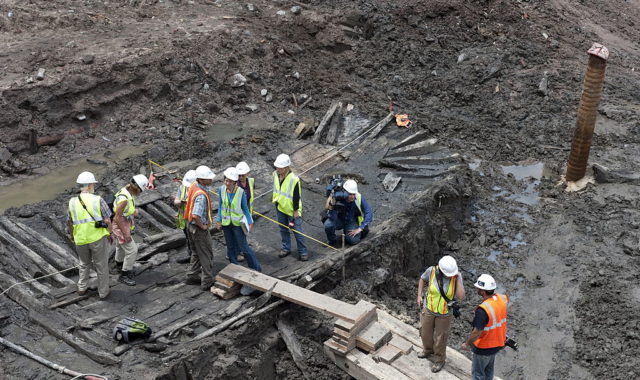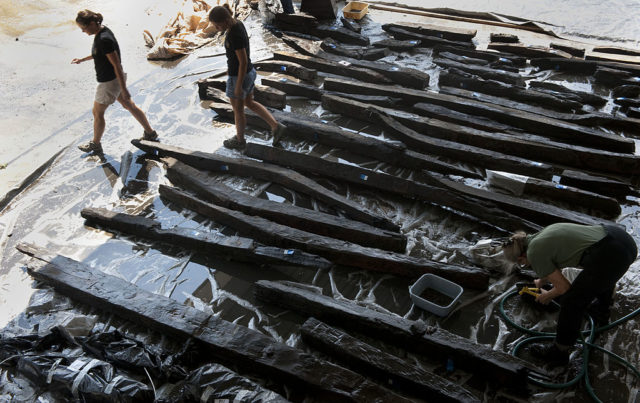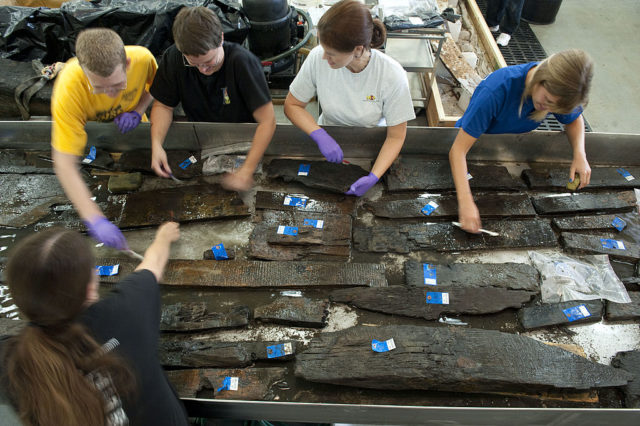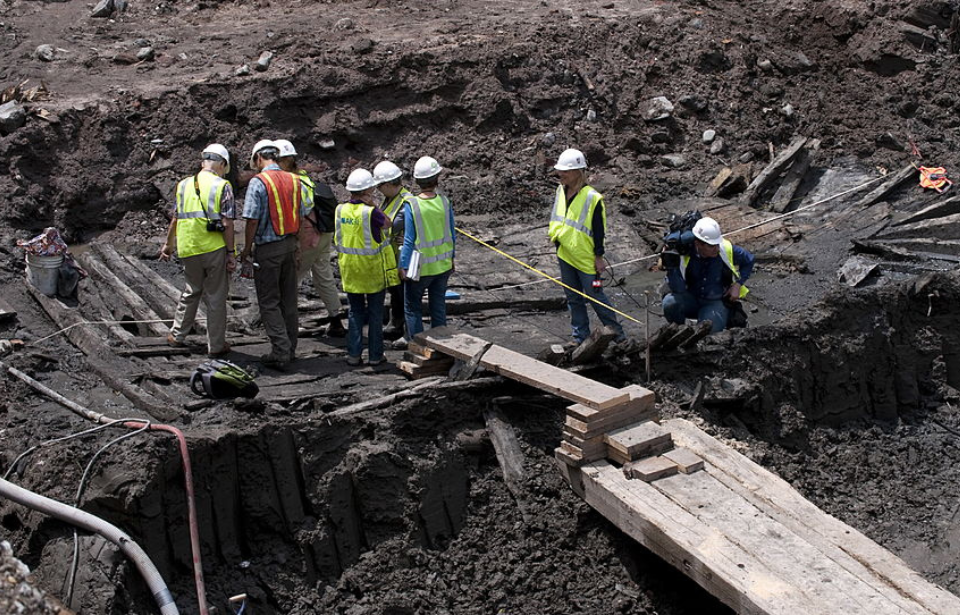While overseeing the excavation of one of the most tragic ruins of the 21st century – those of the World Trade Center – a team of researchers came across something unexpected: the wooden hull of a centuries-old ship. Years after the discovery, the team has almost solved the mystery of their find, although there is still one question left unanswered.
Excavating the World Trade Center

It was in July 2010 that the team made this amazing discovery, buried under 22 feet of soil and debris. The site was just south of where the Twin Towers came down on 9/11. Somehow, when the structures were constructed, the ship went entirely unnoticed.
At the time of the discovery, the workers were tasked with monitoring ongoing construction, to make sure any archaeological finds were properly managed. Molly McDonald, who was working that day, told CNN, “Early one morning, we were monitoring and suddenly saw this curved timber come up. It was clear to me that it was part of a ship, so we stopped the backhoes and started hand digging.”
They obviously wanted answers about their find, so they quickly set to work excavating and researching the hull.
The answers are in the wood

Four years after the ship was first discovered, the team published their findings, also indicating the term “ship” isn’t technically correct. What was found was actually a sloop, a type of vessel used to carry passengers and cargo across the Hudson River.
They used the technique of dendrochronology – tree ring dating – to determine that the wood mostly came from Philadelphia, meaning that was likely where the sloop was built. They were also able to date the vessel to sometime between the mid or late 18th century, likely around 1773. It only sailed for around 20-30 years.
Impressively, the team noted that the same oak trees used to build the sloop were likely also used to construct the hall in Philadelphia where the Declaration of Independence was signed in 1776.
How did the sloop end up beneath the World Trade Center?

The obvious question that remains unanswered is how did the sloop wound up beneath the World Trade Center. No one knows, but that hasn’t stopped the team from throwing out a couple of different possibilities. The leading theory is that the vessel was purposefully sunk to help make the coastline larger. Another suggests it was simply an accidental wreck, nothing more exciting than that.
More from us: Two Treasure Hunters Discovered A Viking Sword With An Unexplored Past
The team were also able to see that the vessel had a shipworm infestation, which would have made the sloop’s life shorter than it should have been, helping to back up the idea that she was sunk on purpose. Either way, they were able to determine she’d been submerged for quite some time before being covered by both dirt and garbage. It was this pile, including the unknown sloop, that made up the Manhattan coastline.
